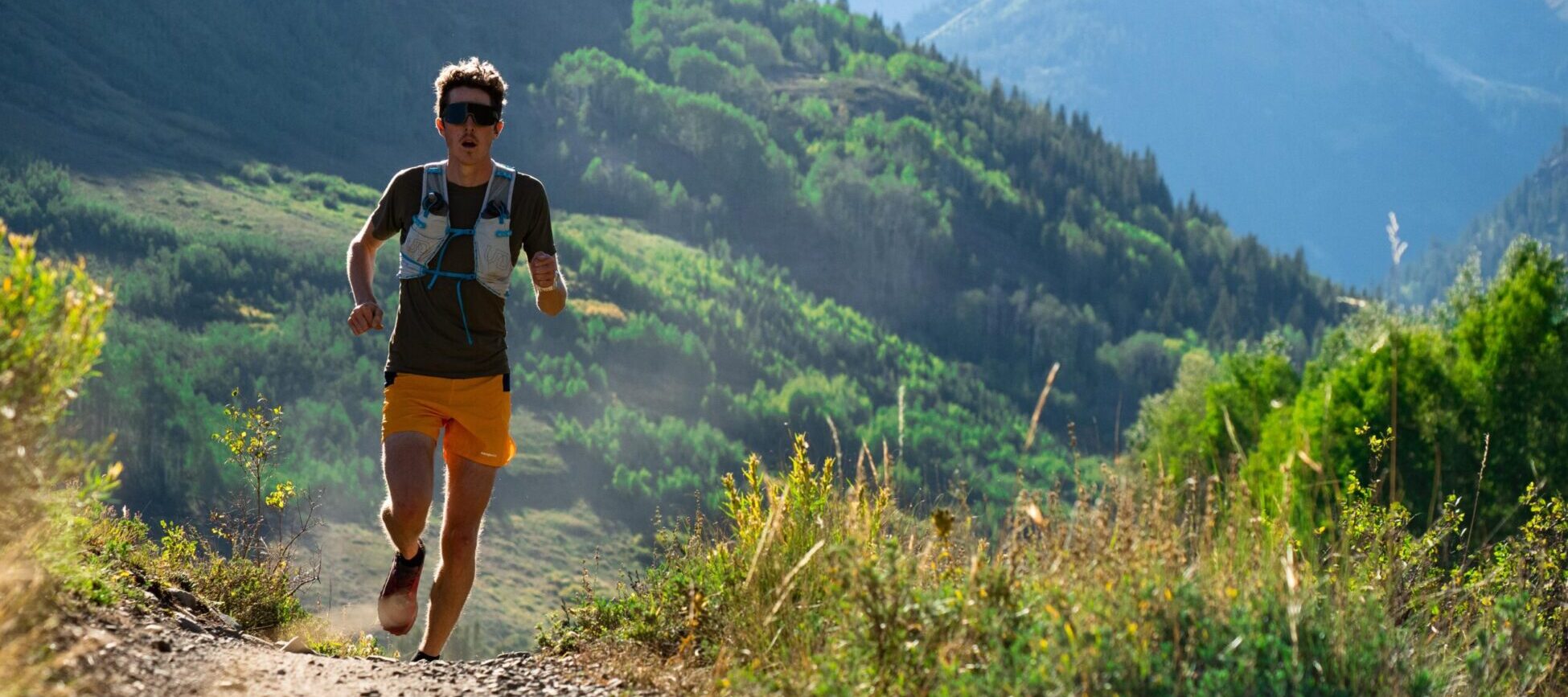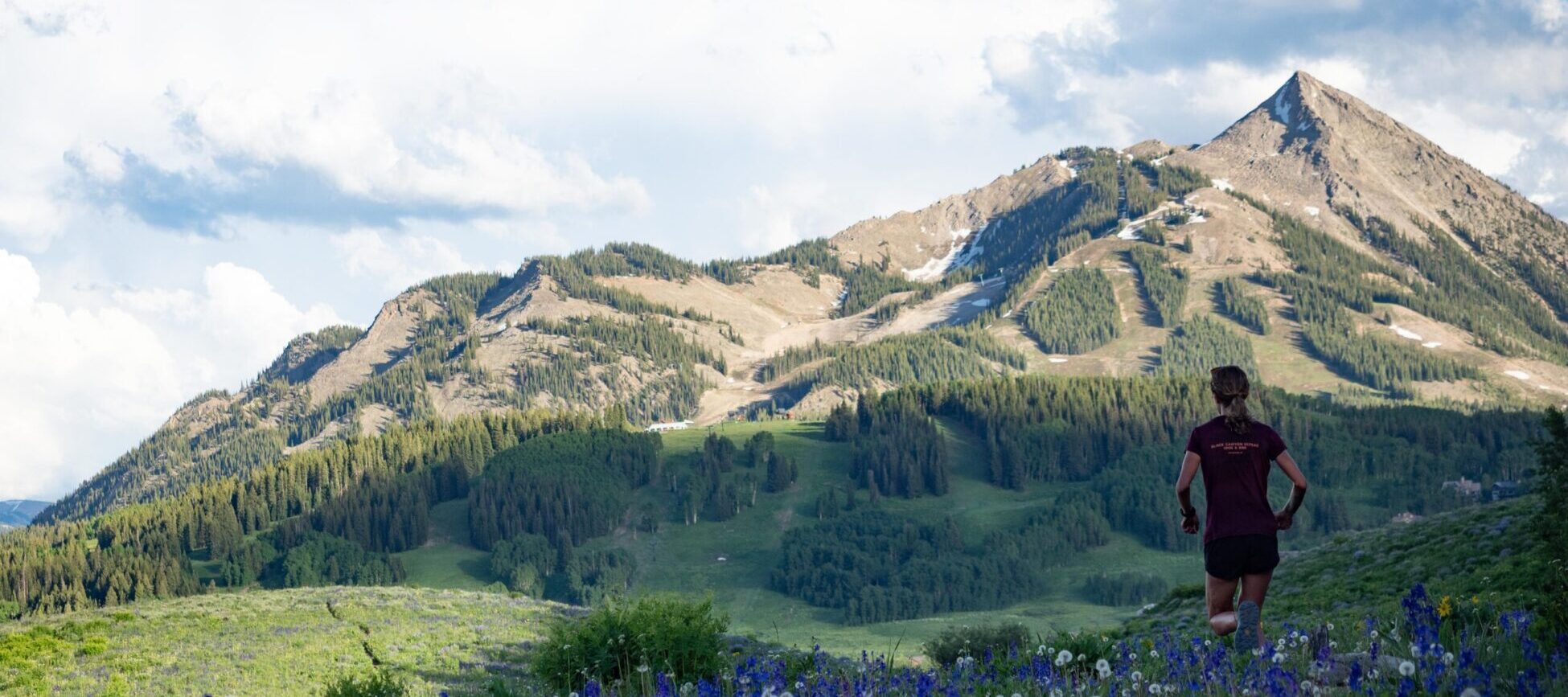
In our Trail Running 101 series, we’ll be covering just about everything you might want to know to get started in the sport, as well as tips and tricks for experienced runners to make it more enjoyable. This is the third part of the series, so stay tuned for more.
Intro
Getting started trail running can lead to lots of questions, including: how dangerous is trail running? And how can I stay safe out there? The answer to the first question is complex, because any time you hit the trail you run the risk of injury. You’re also vulnerable to weather, wildlife, and other people. But with a bit of knowledge and the right gear, you can greatly minimize your risk. Here we break down some common dangers to be cognizant of when out on the trail, and how to best avoid or manage them to stay safe. This is by no means an exhaustive list, but rather, some more general things to be aware of and some best practices, especially as you’re getting started.

What are the Risks?
To be fair, there are risks any time you leave your home — road running also has its share of dangers. But trail running mixes in additional factors. The major risk on most trail runs is an injury or medical emergency. This could come from a trip or fall, for example, or hypothermia from getting caught in a storm you’re not prepared for. Dehydration from not packing enough water or an attack from an animal (or person) are some other possibilities. Often, these types of events in the outdoors occur in a cascade. For example, if you get lost and are stuck out on the trail longer than you expected, you’ll be more likely to run out of food and water, or suffer hypothermia because you weren’t prepared for the time out in the cold. One danger (e.g., getting lost) can cause others, which can compound.
Here are 5 Ways You Can Stack the Odds in Your Favor
Make a plan, let someone else know about it — and stick to it
To avoid getting lost (often the first in a cascade of bad situations), know where you’re going. If in unfamiliar terrain, carry a map and/or navigation device, like your phone. Make sure that access to your digital information still works offline in case you’re out of cell range. Let a trusted friend know where you’re going and when you expect to be back, and then stick to your plan.
Go with a buddy
Running with a buddy won’t necessarily, say, keep you from twisting an ankle, but in the case that you’re debilitated for some reason, a buddy can go for help. Running with a buddy — and talking and making noise — can also be safer if bears or other wildlife are around.

Pack smart
Carry plenty of food and water, as well as layers in case of inclement weather (see our article, What Do I Need to Trail Run? for more details). Don’t forget your map or navigation device, headlamp, and basic first-aid supplies. An emergency blanket is a great thing to leave in your running pack at all times, and if you’ll be out of cell service, a satellite messenger or emergency beacon might be smart. Always carry identification.
Be alert — and wildlife aware
To avoid problems before they start, pay attention to your surroundings. Consider running without ear buds — or with only one. Scan the trail ahead and pick up your feet to avoid a trip or fall. Watch for wildlife, or signs of it, whether it’s a snake crossing the trail or scat from a bear that may still be nearby. Learn about potential wildlife threats in the area before you go, and make sure you’re prepared with the right tools, like bear spray and/or a bear bell if necessary. Local wildlife organizations are often a great place to start if you want to learn more about what sort of animals are in a certain area, and what to do to avoid any issues with them.

Heed the weather
Check the forecast before you go, and be prepared with the right layers. That may mean a rain shell, an insulating layer, a pair of gloves, and/or a hat. Also be ready to change plans if the weather shifts unexpectedly (which can be particularly common in mountainous terrain). If you have the proper gear and plenty of food and water, a bit of rain, snow, or heat might not be a problem. But lightning is another story. If you hear thunder or see lightning, stay off peaks, ridge lines, or exposed places like meadows, where you’re the tallest thing around.
With the right preparation and attention, you can avoid most of the potential dangers involved in trail running — or deal with them when they arise. So remember to pack smart, stay present, and enjoy yourself out on the trails.
